Switch to:
 EN
EN  Português (PT)
Português (PT)  Español (ES)
Español (ES)
Of all means of transport, air is the one with the least chance of contamination regarding the new corona-virus. This is due to numerous factors, ranging from the booklet with safety protocols adopted by Anac (National Civil Aviation Agency) to the filters that renew the air inside the cabin during the flight.
Find out more why business aviation is safer compared to contagion by corona-virus.
More efficient air filters
The air that is breathed inside an aircraft is never the same. If it were, there would be no ideal pressure for humans far from the ground. The rate of air exchange inside a cabin is higher than in any indoor environment, thereby reducing the chances of contracting the new corona-virus on a flight.
In a commercial airplane, this air exchange is carried out through a filter called HEPA, capable of retaining up to 99.99% of any material, such as viruses, bacteria and fungi. Changing the entire volume of air inside the cabin takes about two to three minutes. In business aviation, this exchange takes place in less than a minute. For example, on a King Air family plane, such as the C90GTx, the air is changed in 30-35 seconds, a fact that puts this category of flight at a high level of safety. With the renovation coming from the outside, the heating of the air and the pressurization, no microorganism can survive inside the aircraft.
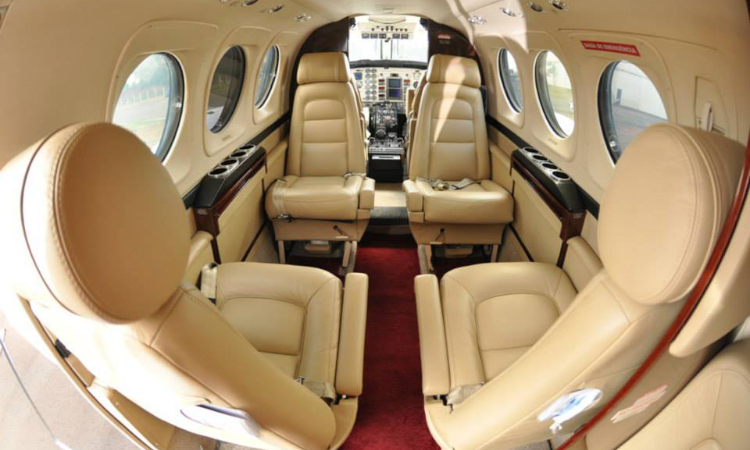
King Air C90B interior 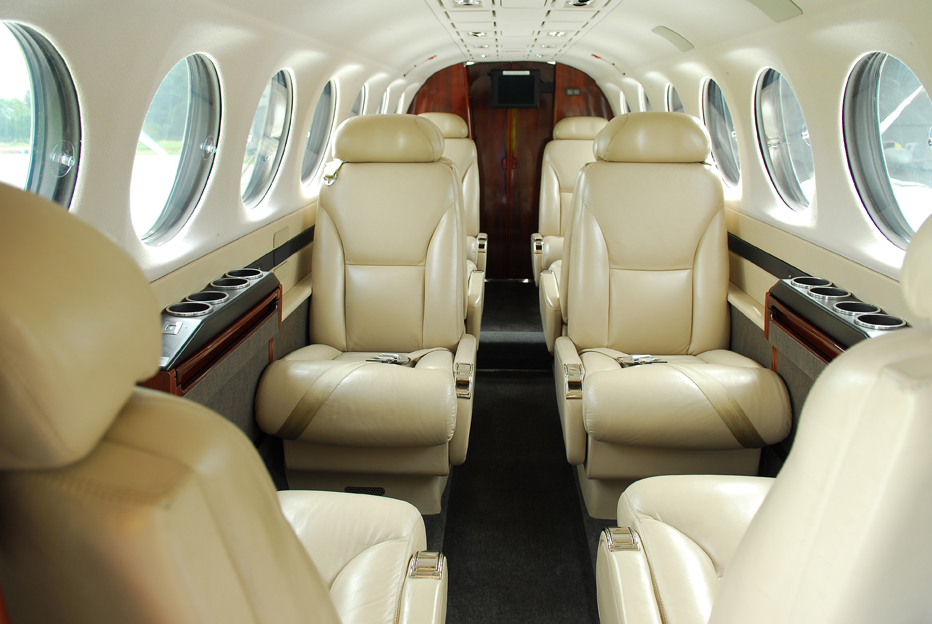
Interior of the King Air 350
Fewer points of contact
Anac (National Civil Aviation Agency) launched a booklet, in May this year, with a series of guidelines, such as the mandatory use of masks by passengers, employees and crew, social distance, in addition to the installation of dispensers with gel alcohol, among other measures. Such actions make the experience with air transport one of the safest in relation to the contagion of the Covid-19.
Even so, it is known that one of the main forms of contagion of the virus occurs through contact with some surface. On a commercial flight, for example, these areas end up being numerous, ranging from check-in to the simple and imperceptible touch of a stair railing.
However, in business aviation, many of these procedures do not exist, and the points of contact, in which passengers interact, are smaller than in conventional mode.
In the case of commercial flights, it is estimated that, in the entire process of going to the airport, boarding, disembarking and leaving the airport, there are, on average, 600 contact areas, which are touching surfaces, meetings with other people, among others. possibilities, which increase the chance of contracting Covid-19. In the case of executive flights, this whole process is shortened (read more in the topic below) and the points of interaction are reduced to just 20, that is, the chance of having contact with any virus in a conventional air operation is 30 times greater than on an executive flight.
Difference in the boarding process
The boarding process on a commercial flight follows a series of procedures, such as:
- check-in;
- baggage dispatch;
- boarding in the main lobby;
- transfer to the aircraft;
- queue to reach the seat;
In addition, if boarding is at peak times, the terminal is likely to be full and the coffee line is long.
In business aviation, however, it is different.
Starting with coffee, all the necessary processes for boarding are simplified. There is no bureaucracy or queuing. From the parking lot, the passenger enters directly into a private room, with tables, chairs and armchairs, already close to the runway.
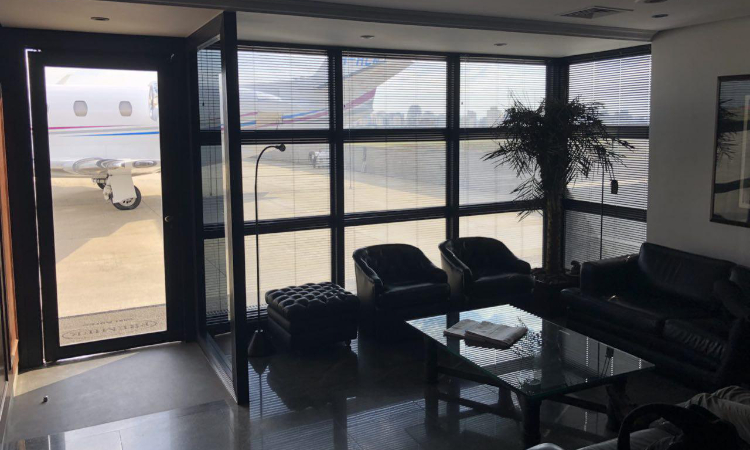
Vip Room in São Paulo 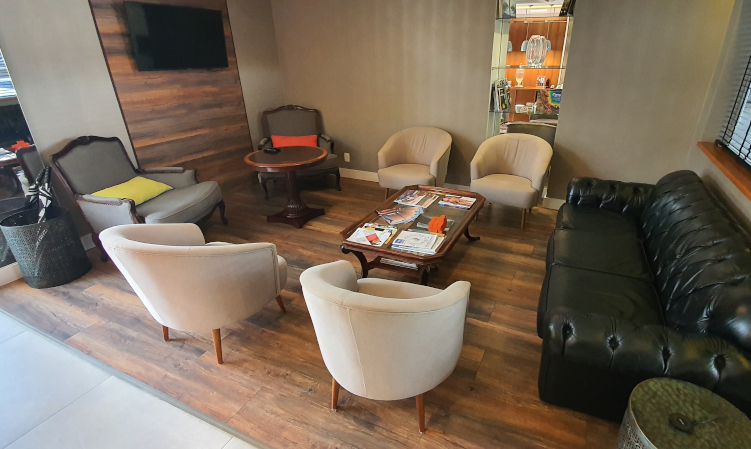
Vip Room in Rio de Janeiro
There is also no check-in, as the passenger receives, in advance and via e-mail, the boarding pass with basic flight directions. When the time comes for boarding, in some airports, the person is able to walk to the aircraft, which has a much smaller number in relation to a commercial operation.
In other words, one of the main advantages of executive aviation, in times of a pandemic, is the fact that there is no experience with the ‘front-end’, common in commercial aviation. And all of this without mentioning that you can arrive up to ten minutes before the flight.
After all, what is the chance of contamination when flying?
The risk of being contaminated with Covid-19 in air transport is low and practically non-existent in the case of business aviation. A study carried out this year by the MIT – Massachusetts Institute of Technology, and corroborated by specialists in the business aviation market, points out the following scenario:
- On a commercial flight, the chance that you will get the virus is 1 in 4,300. On average, the cabin air is renewed by HEPA filters every 2-3 minutes.
- With the middle seat empty in the rows, the chance of contamination reduces to 1 in 7,700. However, the cost of implementing this logistics is high and the percentage reduction is not significant enough to justify the measure.
- On an executive plane, the chances are 20-30 times less, with an average of 1 in 80,000. As mentioned earlier, a popular turboprop, like the King Air B250, has its cabin air renewed every 30-35 seconds.
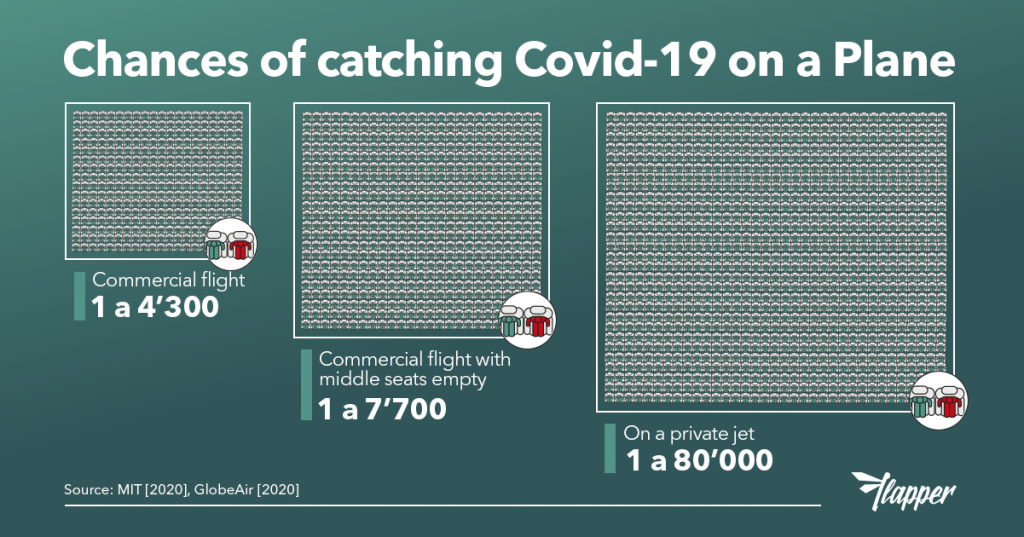
The analysis was made taking into account the different factors mentioned, such as the change of air in the cabin, which is carried out in smaller intervals than in conventional aviation – 2-3 minutes is the time it takes to change the air on a flight commercial aviation, while in private aviation this interval decreases to less than a minute.
In addition, the boarding process, which is much more practical – and fast – on an executive flight, since most operations do not require the series of procedures adopted at airports for commercial flights, such as check-in, transfer until the aircraft, among others.
Another aspect that makes business aviation a safer way in relation to the contagion of the new coronavirus are the contact points, which are touching surfaces, encounters with other people, etc. – on a private flight there are around 20 interactions, mainly limited in contact with the crew and employees of the hangar, while in conventional aviation this number can reach 600, including the general public of the airport.
If you are still unsure about the chance of contamination on flights, be sure to check out the procedures adopted by Flapper to ensure your safety at all times.
